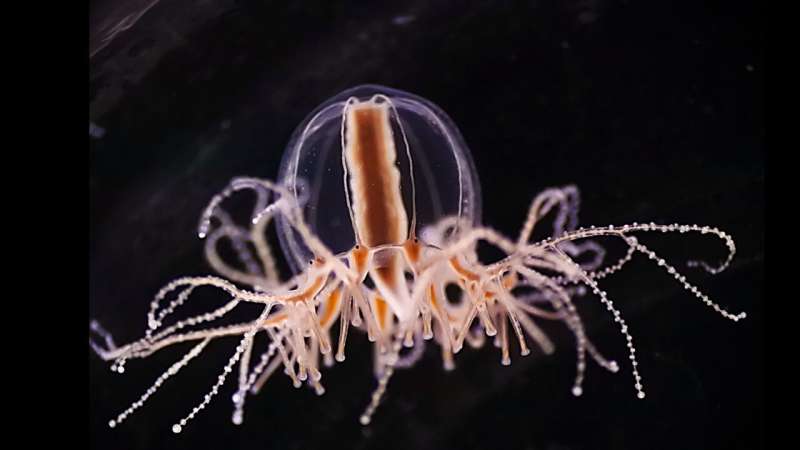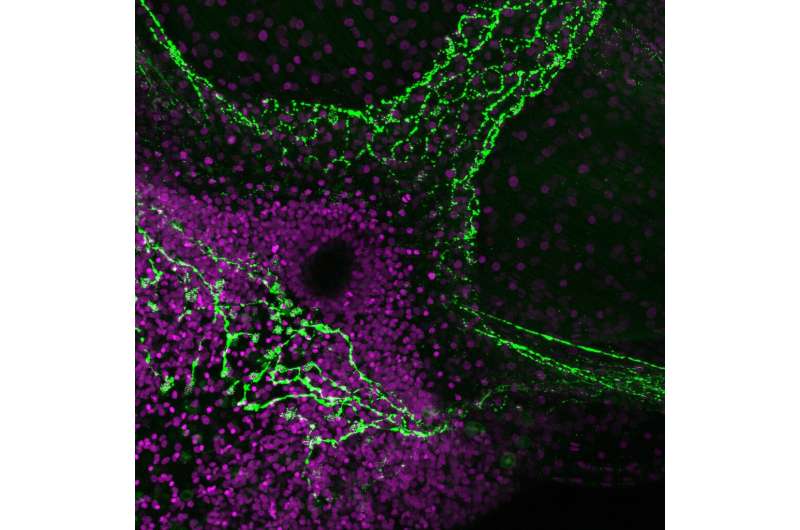April 7, 2023 report
This article has been reviewed according to Science X's editorial process and policies. Editors have highlighted the following attributes while ensuring the content's credibility:
fact-checked
peer-reviewed publication
trusted source
proofread
Peptide that signals feeding suppression in jellyfish identified

A team affiliated with multiple institutions in Japan has identified a peptide that signals feeding suppression in jellyfish. In their study, reported in Proceedings of the National Academy of Sciences, the group dissected sample jellyfish and studied their genes.
Prior research has shown that the act of eating is generally a complicated process in most animals because it involves several sub-processes. One such sub-process involves the mechanisms involved in sensing hunger and also sensing when enough food has been consumed. In this new effort, the research team focused their efforts on learning more about how a jellyfish determines when it has had enough to eat.
The work involved dissecting several jellyfish samples, focusing most specifically on the core, which holds most of the digestive tract and the bell, which is where most of the nervous system is located. They then conducted an exhaustive search of the jellyfish genome to determine which genes were activated when the jellyfish was hungry and when it was sated. They found 43 genes, each of which control the expression of small molecules that might work as hormones.

Next, the team synthesized molecules controlled by all 43 of the genes they had isolated and tested each for their impact on feeding behavior in live jellyfish, narrowing down their list of likely suspects. More testing allowed them to narrow their options down to just one peptide, which they refer to as GLWamide (GLWa). They then carried out extensive testing of GLWa with live jellyfish, giving it to hungry specimens as well as those that had been well fed. They found that giving the jellies the peptide worked as a diet suppressor—the jellyfish thought they were full so they stopped eating.
The research team then turned their attention to fruit flies. They found that feeding them a relative of GLWa called MIP did the same thing. It made the flies think they were full so they stopped eating, even if they had not eaten for quite some time. The researchers suggest that hormones such as GLWa developed very early in evolutionary terms because fruit flies and jellyfish are so far apart in the animal kingdom.
More information: Vladimiros Thoma et al, On the origin of appetite: GLWamide in jellyfish represents an ancestral satiety neuropeptide, Proceedings of the National Academy of Sciences (2023). DOI: 10.1073/pnas.2221493120
Journal information: Proceedings of the National Academy of Sciences
© 2023 Science X Network





















